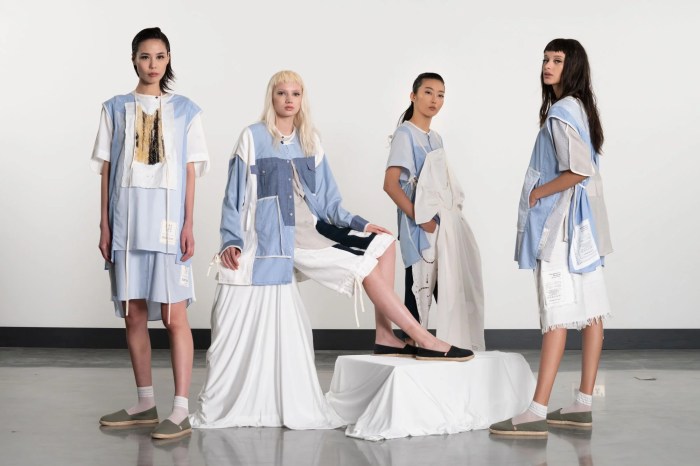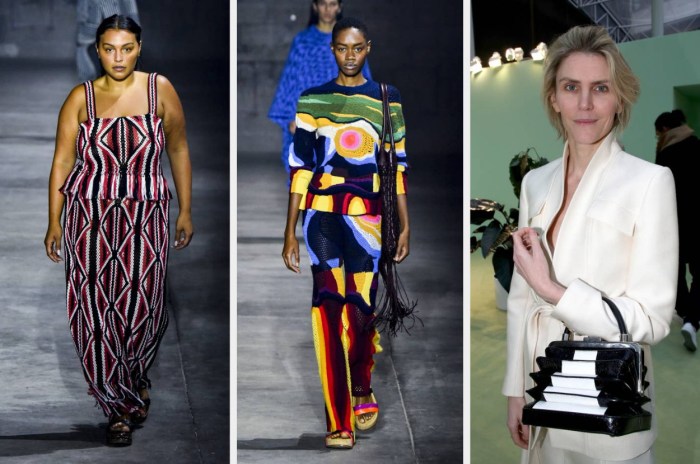
The fashion industry, once synonymous with glamour and fast-paced trends, is undergoing a radical transformation. Sustainability has become a driving force, prompting designers and consumers alike to re-evaluate their choices. From ethical sourcing to innovative materials, the demand for eco-conscious fashion is growing, and educational institutions are responding by offering specialized programs that equip future generations with the knowledge and skills to lead this sustainable revolution.
This article delves into the world of top fashion and design programs dedicated to sustainable practices. We explore the leading universities and colleges that are shaping the future of fashion by integrating ethical principles into their curriculum and research. We’ll uncover the key practices that define sustainable fashion, highlighting innovative technologies and techniques that are driving change.
The Future of Sustainable Fashion and Design

The fashion industry is at a crossroads. The demand for clothing is ever-increasing, but the environmental and social costs of fast fashion are becoming increasingly unsustainable. Sustainable fashion is not just a trend; it is a necessity. The future of fashion lies in adopting sustainable practices that minimize environmental impact and promote ethical labor conditions.
Emerging Trends and Challenges
The sustainable fashion industry is evolving rapidly, driven by a growing awareness of the environmental and social impact of fashion production. Several trends are shaping the future of sustainable fashion, presenting both opportunities and challenges.
- Circular Fashion:Circular fashion is a key trend, emphasizing the reuse, repair, and recycling of clothing to minimize waste. This approach focuses on extending the life cycle of garments and reducing reliance on virgin materials.
- Bio-based Materials:There is increasing interest in using bio-based materials derived from renewable sources, such as plants, fungi, and algae. These materials offer a more sustainable alternative to traditional textiles like cotton and polyester.
- Transparency and Traceability:Consumers are demanding greater transparency and traceability in the supply chain. Brands are increasingly adopting blockchain technology and other tools to provide consumers with information about the origin of their clothes and the environmental and social impact of their production.
- Ethical Labor Practices:Fair wages, safe working conditions, and responsible labor practices are becoming essential aspects of sustainable fashion. Brands are working to ensure that their supply chains are ethical and transparent.
- Digitalization and Innovation:Technology is playing a crucial role in driving innovation in sustainable fashion. 3D printing, virtual fashion, and other digital tools are being used to reduce waste and create new possibilities for sustainable design.
Potential Solutions and Innovations
The transition to a more sustainable fashion industry requires innovative solutions and collaboration across the value chain. Here are some potential solutions:
- Closed-Loop Systems:Developing closed-loop systems for textile production, where materials are reused and recycled effectively, is essential for reducing waste. This can involve investing in advanced recycling technologies and promoting the use of recycled materials.
- Sustainable Dyeing and Finishing:The dyeing and finishing processes in textile production often involve hazardous chemicals and consume significant amounts of water. Developing sustainable dyeing and finishing techniques is crucial for minimizing environmental impact.
- Bio-based Textiles:Investing in research and development of bio-based textiles derived from renewable sources can provide sustainable alternatives to traditional materials. Examples include pineapple leather, mushroom leather, and seaweed fibers.
- Sustainable Packaging:Reducing packaging waste is essential for a sustainable fashion industry. Brands can adopt eco-friendly packaging materials like recycled paper and biodegradable plastics.
- Collaboration and Partnerships:Collaboration between brands, designers, researchers, and consumers is crucial for driving innovation and scaling up sustainable practices.
The Role of Technology and Consumer Behavior
Technology and consumer behavior are key drivers of change in the sustainable fashion industry.
- Digital Platforms:Online platforms and mobile apps can connect consumers with sustainable brands, provide information about the environmental and social impact of products, and promote sustainable consumption habits.
- Virtual Fashion:Virtual fashion allows consumers to try on clothes digitally, reducing the need for physical samples and minimizing waste. This can also promote creativity and innovation in sustainable design.
- Consumer Education:Educating consumers about the environmental and social impact of fashion is essential for driving demand for sustainable products. This can be achieved through campaigns, educational materials, and transparent labeling.
- Sustainable Consumption:Consumers are increasingly choosing sustainable products and brands that align with their values. This shift in consumer behavior is driving the growth of the sustainable fashion market.
Fashion and Style
Sustainable fashion is no longer a niche movement; it’s a mainstream trend gaining momentum. This shift is driven by a growing awareness of the environmental and social impact of the fashion industry. More importantly, it reflects a desire for style and ethics to go hand-in-hand.
Sustainable Fashion Brands and Designers
Sustainable fashion brands and designers are leading the charge in creating stylish and ethical clothing. They prioritize sustainable materials, ethical production practices, and timeless designs.
- Patagonia:Known for its commitment to environmental activism and durable, high-quality outdoor apparel, Patagonia uses recycled materials and supports fair labor practices.
- Eileen Fisher:This brand focuses on minimalist, timeless designs and uses organic cotton, recycled materials, and sustainable dyes. Their commitment to ethical production is evident in their fair wages and safe working conditions.
- Stella McCartney:A pioneer in vegan fashion, Stella McCartney uses innovative materials like mushroom leather and recycled polyester. Her designs are known for their sophisticated and modern aesthetic.
- Veja:This French brand creates stylish sneakers using sustainable materials like organic cotton, wild rubber, and recycled plastic bottles. Their focus on transparency and ethical sourcing makes them a popular choice for conscious consumers.
Integrating Sustainable Fashion into Personal Styles
Sustainable fashion is not limited to specific styles or aesthetics. It can be seamlessly integrated into any personal style, from bohemian to minimalist, classic to edgy.
- Bohemian:Embrace natural fabrics like linen and hemp, earthy tones, and flowing silhouettes. Look for brands that use traditional handloom techniques and promote fair trade practices.
- Minimalist:Choose simple, timeless designs in neutral colors. Look for brands that use high-quality, durable materials and prioritize ethical production.
- Classic:Invest in classic pieces that you can wear for years to come. Opt for brands that use sustainable materials and prioritize longevity over fast fashion trends.
- Edgy:Explore sustainable brands that offer bold designs and unique silhouettes. Look for materials like recycled denim, upcycled fabrics, and innovative plant-based materials.
Fashion and Design

Sustainable fashion practices go beyond just reducing environmental impact; they also contribute to building stronger, more equitable communities. By prioritizing ethical sourcing, fair wages, and local production, sustainable fashion empowers artisans, promotes economic development, and preserves cultural heritage.
Impact of Sustainable Fashion Practices
Sustainable fashion practices have a profound impact on both local communities and the environment. Here’s how:
- Economic Empowerment:Sustainable fashion often supports small-scale producers, artisans, and farmers, providing them with fair wages and opportunities for economic growth. For example, the Fair Trade movement ensures that farmers and workers in developing countries receive a living wage and safe working conditions.
- Environmental Conservation:By reducing waste, minimizing pollution, and promoting sustainable materials, sustainable fashion helps protect natural resources and ecosystems. For example, organic cotton farming practices conserve water and soil, while recycled materials reduce the need for virgin resources.
- Social Responsibility:Sustainable fashion emphasizes ethical labor practices, ensuring that workers in the fashion industry are treated fairly and with respect. This includes safe working conditions, fair wages, and the elimination of child labor and forced labor.
Examples of Sustainable Fashion Initiatives
Numerous individuals and organizations are actively working to promote sustainable fashion and design. Here are some inspiring examples:
- Stella McCartney:A leading voice in sustainable fashion, Stella McCartney has consistently championed cruelty-free materials, sustainable production methods, and ethical sourcing. Her brand has been recognized for its commitment to environmental responsibility and social justice.
- The Ethical Fashion Initiative (EFI):The EFI works with artisans in developing countries to create high-quality, ethically produced fashion products. Their focus is on empowering women and promoting sustainable livelihoods in vulnerable communities.
- The Slow Fashion Movement:This movement encourages consumers to buy less, wear longer, and support brands that prioritize quality and ethical production. It emphasizes mindful consumption and a shift away from fast fashion trends.
Resources and Initiatives for Sustainable Fashion
For individuals interested in learning more about sustainable fashion and contributing to its growth, there are numerous resources and initiatives available:
- The Fashion Pact:A global agreement signed by over 150 fashion brands and organizations committed to achieving ambitious sustainability goals. It aims to address environmental and social challenges in the fashion industry.
- The Sustainable Apparel Coalition (SAC):A non-profit organization that develops and promotes sustainability standards and tools for the apparel industry. It provides resources and guidance for companies to measure and improve their environmental and social impact.
- Ethical Fashion Forum (EFF):A UK-based organization that promotes ethical and sustainable practices in the fashion industry. It hosts events, provides resources, and advocates for policy changes to support a more sustainable fashion sector.
Outcome Summary
As we move forward, the fashion industry faces both challenges and opportunities in its pursuit of sustainability. The integration of technology, the shift in consumer behavior, and the collective efforts of designers, brands, and institutions will be crucial in shaping a more responsible and sustainable future.
By embracing ethical practices, fostering innovation, and advocating for change, we can collectively create a fashion landscape that is both stylish and environmentally conscious.
Quick FAQs
What are the most important factors to consider when choosing a sustainable fashion program?
When choosing a sustainable fashion program, look for institutions with a strong focus on ethical sourcing, responsible manufacturing, and innovative materials. Additionally, consider the program’s curriculum, faculty expertise, and research opportunities related to sustainability.
How can I get involved in the sustainable fashion movement even if I’m not a designer?
There are many ways to contribute to sustainable fashion! You can support ethical brands, shop secondhand, reduce your clothing consumption, advocate for change, and educate others about the importance of sustainable practices.





